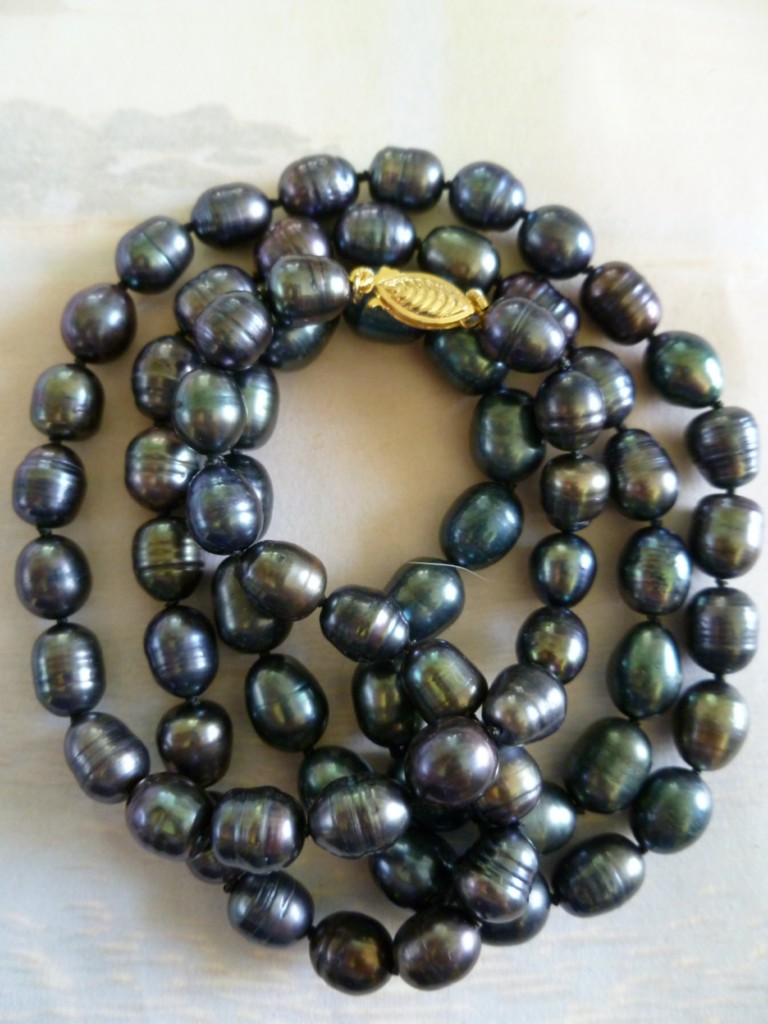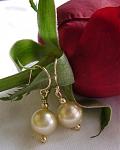Item specifics
Condition: New without tags: A brand-new, unused, and unworn item that is not in original retail packaging or may be missing ... Read more
about the condition
Colour: BlackMain Stone: tahitianMaterial: Gold 14kt
Cultured TAHITIAN PEARL PENDANT 14KT GOLD 12mm
Item condition:New without tags
AU $35.00Approximately ?23.86
TAHITIAN PEARL
12 MM
14KT Gold
Pearls are "in" this season these will really make a statement
Colour : BLUE BLACK
Pearl type: TAHITIAN BAROQUE PEARL
Size:12 mm long x 8 mm wide
Shape: oval
Surface: normal rings and shape for a tahitian pearl
Setting:14kt GOLD 1/20 on 925 Silver
Shine: Great Shine
Packaged: Gift boxed wrapped. Mailed in Aust Post padded bag.
************************
Since the development of pearl culture technology, the black pearl oyster found in Tahiti and many other Pacific Island areas has been extensively used for producing cultured pearls.
In fact Black pearls are very rarely black: they are usually shades of green,purple, aubergine, blue, grey, silver or peacock (a mix of several shades, like a peacock's feather)
Black cultured pearls from the black pearl oyster – Pinctada margaritifera – are not South Sea pearls, although they are often mistakenly described as black South Sea pearls. In the absence of an official definition for the pearl from the black oyster, these pearls are usually referred to as "black Tahitian pearls".
Nearly all pearls sold today are cultured pearls. Cultured pearls are a product of pearl farmers helping nature. Several inventors at the beginning of the 20th century discovered techniques of pearl cultivation.
Cultured pearls can be from saltwater or freshwater mollusks. Pearl farmers introduce a shell bead into the oyster or mussel and the mollusk deposits layers of nacre around the bead.
Many people use the term cultured pearls to refer only to pearls produced from saltwater oysters. However, the process to make freshwater pearls is the same. The correct usage is freshwater cultured pearls or saltwater cultured pearls.
When a mollusk creates a pearl in nature, the resulting pearl is most often odd-shaped, because the irritant is seldom round, in the first place. Natural round pearls were so rare, they commanded astronomically high prices!
When folks started implanting ROUND irritants into oysters, it was far easier to come up with some pretty nice round pearls. So started the CULTURED PEARL industry, and bingo! Everyone could afford pearls!
Freshwater mussels and salt water oysters are used in pearl culture, and both come up with some gorgeous gem-quality pearls. The larger the oyster, the larger the resulting pearl. Usually the smaller the pearl the higher the shine…the larger cultured freshwater pearls for example 11-12mm and up are usually duller in shine as it is a struggle for the oyster to handle such a large piece. So a really high luster on a large pearl will COST $$$.
Real pearls come in the color of the nacre that the oyster or mussel produces...usually white, dark silver, teal/peacock, light silver, gold, grey, or white with overtones of blue, pink, or silver. Of course pearls can be dyed hence the vivid blues, greens, red ECT. The dyes do penetrate into the core and won’t wear or rub off.
Pearls are Porous and will absorb skin oils, fragrance and makeup over time so will need to be kept clean and out of contact with metals that can mark, scratch their surface.
REALITY CHECK
Keep in mind the higher the quality the higher the price, $5 won’t get you a high end quality cultured pearl.
The setting also has a bearing on the end price.
? Silver or white gold coated alloy stems and backs are the normal through the online system.
? White Gold Rhodium plated is white gold bonded to metal alloy practical and long lasting.
? 925 solid sterling silver will bear a 925 stamp
? 1/20 14KT gold bonded is 925 sterling silver base with 14KT gold bonded has a 1/20 14KT stamp. These are considered jewellery store standard and prices range.
? Solid 9KT/ 10KT/ 14KT






